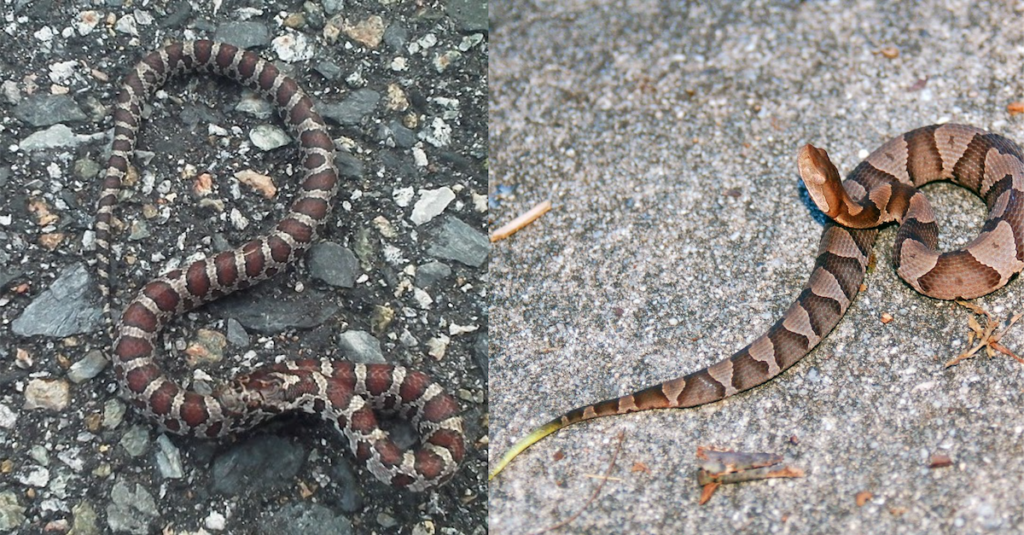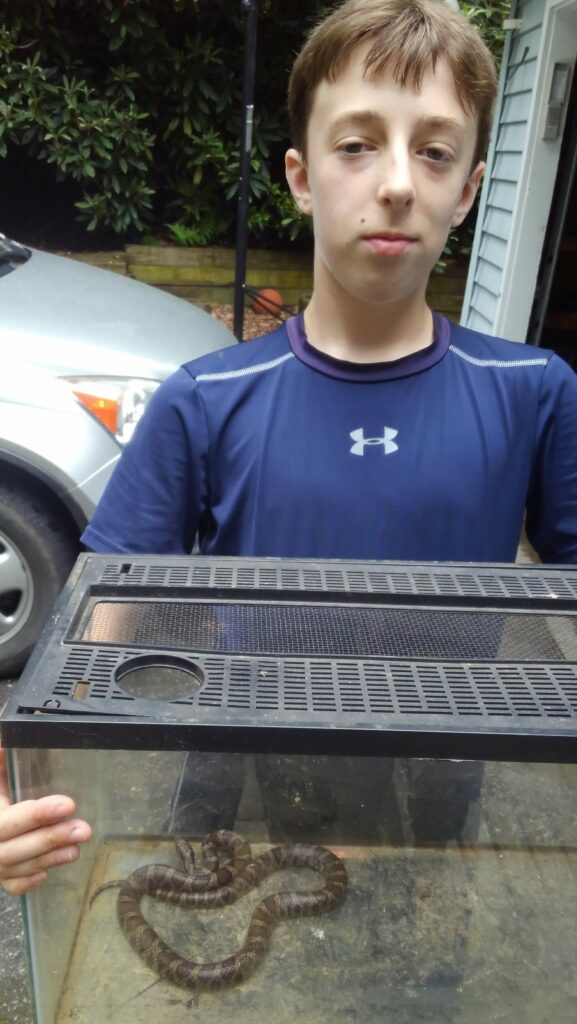The Misunderstood Milk Snake
go.ncsu.edu/readext?1078166
en Español / em Português
El inglés es el idioma de control de esta página. En la medida en que haya algún conflicto entre la traducción al inglés y la traducción, el inglés prevalece.
Al hacer clic en el enlace de traducción se activa un servicio de traducción gratuito para convertir la página al español. Al igual que con cualquier traducción por Internet, la conversión no es sensible al contexto y puede que no traduzca el texto en su significado original. NC State Extension no garantiza la exactitud del texto traducido. Por favor, tenga en cuenta que algunas aplicaciones y/o servicios pueden no funcionar como se espera cuando se traducen.
Português
Inglês é o idioma de controle desta página. Na medida que haja algum conflito entre o texto original em Inglês e a tradução, o Inglês prevalece.
Ao clicar no link de tradução, um serviço gratuito de tradução será ativado para converter a página para o Português. Como em qualquer tradução pela internet, a conversão não é sensivel ao contexto e pode não ocorrer a tradução para o significado orginal. O serviço de Extensão da Carolina do Norte (NC State Extension) não garante a exatidão do texto traduzido. Por favor, observe que algumas funções ou serviços podem não funcionar como esperado após a tradução.
English
English is the controlling language of this page. To the extent there is any conflict between the English text and the translation, English controls.
Clicking on the translation link activates a free translation service to convert the page to Spanish. As with any Internet translation, the conversion is not context-sensitive and may not translate the text to its original meaning. NC State Extension does not guarantee the accuracy of the translated text. Please note that some applications and/or services may not function as expected when translated.
Collapse ▲Over the last several years, I’ve had many friends and Extension clients text or email pictures of snakes they’ve encountered on their property (some alive…some missing a head), asking for identification. Most of the texts & emails start with: “Is this a copperhead?” But the most common ‘villain’ in the photo is an eastern milksnake. Because of their colorful gray and brown/black patterns, they are VERY often confused with copperheads. Here in Watauga County, while copperheads do frequent rocky outcrops along the escarpment and other lower elevation spots in the county, you are MUCH more likely to run across a milk snake (or other non-venomous ones).
The eastern milksnake is quite common across all of the High Country counties. While I haven’t heard it referred to as any of these other names, apparently it’s also called: chain snake, cow-sucker, highland adder, horn snake, leopard-spotted snake, milk sucker, pilot, and thunder-and-lightning snake. While a lot of these names imply #DANGER!, milk snakes are rather small and timid…unless you decide to try to handle them. They will bite! However, they are not venomous. Milksnakes feed on a variety of small critters: primarily mice but also other small mammals, snakes, birds & bird eggs, slugs, and insects. Apparently its name, milk snake (as well as ‘cow-sucker’) originated from where they are often found…in or near barns. Apparently the old-timers believed them to be doing unmentionable things to their livestock. They are nocturnal predators that like hanging out in mixed open and shady habitats…basically between the house/barn, the yard, and the woods.
The easiest way to tell the difference between a milksnake and a copperhead is by color and pattern. Copperheads tend to be a more golden brown color with a ‘hershey-kiss’ pattern, while milk snakes have a more ‘blotchy’ pattern of dark brown/gray/black spots or bands. If you dare to get close enough to look them in the eyes, you’ll notice that milk snakes have rounded pupils, while copperheads, which are pit vipers, have a more ‘sinister-looking’ slit.

Small milk snake (left) vs juvenile copperhead (right). Notice the ‘hershey-kiss’ pattern on the copperhead.
To me, while both snakes are ‘pretty’ in their own right, copperheads have much more symmetrical patterning, while milk snakes are just more dark and blotchy…here in the High Country, anyway. But their patterns vary depending on where you go. In some parts of the country, milk snakes can have red & light gray bands. Regardless, milk snakes (and even copperheads!) play an important role in our ecosystem–feeding on often unwanted rodents and insects…and really just doing what snakes do. So please, before you pick up the hoe or hurt yourself trying to jump up on the patio furniture, take a deep breath and look a little closer. I know a lot of folks don’t want ANY snake near their property, but there’s no reason to lop a head off (and risk injury to yourself) just from bein’ skeered! If you have any questions or need reptile ID, you’re welcome to send me a pic: jim_hamilton@ncsu.edu






